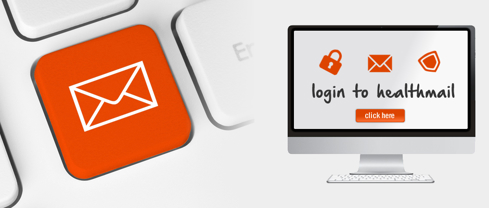Healthmail - Secure email for Clinicians
Introduction
Healthmail, secure clinical email, is a service that allows health care providers to send and receive clinical patient information in a secure manner. The initial implementation of Healthmail was for general practitioners (GPs) and their support staff however it is also now available to Community Pharmacies, Nursing Homes and Optometrist Practices. Using Healthmail, patient identifiable clinical information can be shared with colleagues in the HSE, Voluntary Hospitals plus a number of other health care agencies nationally. Healthmail is configured to be easy to use and will improve electronic communication for the benefit of patients and clinicians.
The Problem
Although GPs used structured electronic messages for many years to get laboratory and radiology results from hospitals and send electronic referrals to cancer services, they did not have a secure clinical email service. The limitations of normal email meant they could not include patient identifiable clinical information in their communications with clinicians such as public health nurses and hospital consultants. This limited the interactions with their clinical colleagues to face-to-face, phone, fax or letter.
The Solution
Healthmail supports the secure exchange of clinical information at the point of care. Launched in November 2014, it is a private, bounded, secure email service based in the Mater Hospital data centre. GPs can access their Healthmail accounts on desktops, laptops, tablets and smartphones and can easily share patient data. GPs get an @healthmail.ie account and the Healthmail servers are securely connected, using Transport Layer Security (TLS) with mail servers in the HSE and Voluntary Hospitals. A number of health agencies are securely connected to Healthmail, creating a private bounded secure trusted network of clinicians.

GPs can register for a Healthmail account online at https://www.healthmail.ie/. Each GP can register an account for him or her self and for a practice support staff member or generic practice account. Registration is free and the application is authenticated by the ICGP.
Healthmail can be used for two-way secure electronic communication with clinicians in primary and secondary care. Examples of use include:
- Replacing insecure Faxes;
- Transferring electronic patient records between general practices when patients move house;
- Replacing telephone calls and telephone tag;
- Communicating clinical queries from GPs to departments or specialties e.g. advice on managing patients with cardiac failure;
- Sending attachments, images, spreadsheets, reports, or any document of file between hospital departments and GPs;
- Aiding medicine management as patients with multiple co-morbidities move between primary and secondary care;
- Supporting team work by Primary Care Teams, Palliative Care Teams, Community Intervention Teams;
- Providing summary information to hospitals on patients presenting to MAUs, EDs, OPD;
- Generally improving communication at the point of care: up to date accurate information when needed;
The Benefits
Here is one GP’s account of how Healthmail helped him to care for a patient with complex disease:
“Healthmail assisted in the care of an 80 year old long stay resident of a nursing home I visit. He has rheumatoid arthritis and very limited mobility. As a result of his rheumatoid arthritis he has anaemia of chronic disease that has in the past responded to Erythropoietin injections. This drug is a high tech medicine and can only be prescribed by his Haematologist in the local hospital.
Recently he complained of fatigue and breathlessness. His Haemoglbin was 9.6 (normal 12-14). In the past he would go and see the Haematologist and probably get either a transfusion or Erythropoeitin. This time I sent the details of his blood results and condition by Healthmail to the Consultant Haematologist who responded within 24 hours with advice and promised to send a high tech script for Erythropoietin to the nursing home, which he did. The patient is recovering well and his Haemoglobin is now back to 11. Healthmail allowed me to get access to consultant advice quickly and meant a frail and elderly man with limited mobility did not have to attend an Out Patients Department to get the treatment he required.”
In summary, Healthmail connects clinicians throughout the health services and allows them to provide better, timely, accurate care to patients.
Acknowledgements
Healthmail is sponsored by the HSE Primary Care Directorate and funded by the HSE.
- Ambulance Arrivals Project A Case Study
- SNOMED National Release Centre (NRC)
- SVUH Award winning Patient Flow Whiteboard
- Scan for Surgery
- Hospital-based care
- Digital Natives Sign App
- Digitisation of risk assesment tools for Adult mental health services in north Dublin
- Patient Engagement Operating Systems - Hep C
- Digital Transition for HSCPs at St. James's Hospital
- Primary Care Centre Castlebar Case Study
- Mario - Managing active and healthy ageing using caring service robots
- Claimsure - Health Insurance Claims Management System
- Cyber Attack Response
- Data systems in SVUH Emergency Department
- Electronic Discharge Prescription Pilot
- Epilepsy EPR
- eReferral
- eReferral Radiology Pilot
- eRostering
- Electronic Blood Tracking
- GP Practice Management Systems
- Healthmail
- Heart Failure Virtual Clinic
- Infrastructure - MPUP to ECAM
- IT Security - Small changes, big difference
- Kidney Disease Clinical Patient Management System
- Local Asset Mapping Project at St James' Hospital
- LUCY
- Mi Kidney App
- Model Community
- NCHD - Employment Record Portal
- Nursing & Midwifery Quality Care Metrics
- Ophthalmology Electronic Patient Record
- PharmaBuddy
- Radiology & Electronic Patient Record
- National Smart-Pump Drug Library of Paediatric and Neonatal Standardised Concentration Infusions
- Quality & Patient Safety
- Robotic Assisted Surgery Programme
- Shared Learning on EHR
- St. James' Hospital - National Haemophilia System
- Tallaght Hospital Pharmacy
- Tallaght Hospital Patient Engagement App
- Track & Trace
- Using IT to Improve Ireland's Public Sector Healthcare
- National Audiology Clinical Management System (NA-CMS)
- St Vincent's University Hospital Award Winning Whiteboard Patient Flow System
- Snomed Case Study
- Telehealth Project Donegal
- St Vincent's Whiteboard Patient Journey System a Case Study
- Ambulance Arrivals Project

